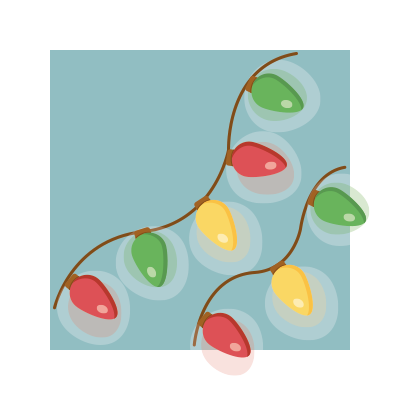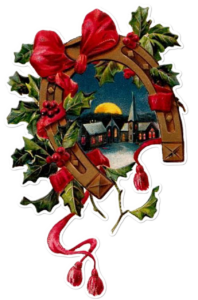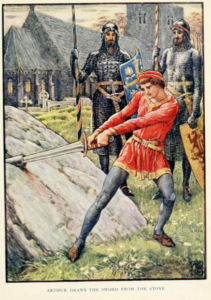Classroom Capers: The Case for Using Mnemonics
William E. Engel
Published in Connotations Vol. 9.2 (1999/2000)
Above all, the memory of children should be trained and exercised: for this is, as it were, a storehouse of learning; and it is for this reason that the mythologists have made Memory the mother of the Muses, thereby intimating by an allegory that there is nothing in this world like memory for creating and fostering.
Plutarch, Education of Children, §13
I. Background
This essay both stands on its own as a demonstration of the pedagogical value of mnemonics and also supplements my earlier manifesto on the subject. That essay concluded: "Mnemonic criticism provides a way for Renaissance scholars to recover some of these shadows because it enables us once again to see the source of light, and to contemplate how these commonplace images were conceived, projected, and viewed" (30). My orientation to Memory Theatres has tended to be primarily Neoplatonic, which is evident from, not only the tenor of my argument, but also my use of images typically associated with that tradition (light symbolizing knowledge; darkness, ignorance). The same applies to my more recent study which explored how our general categories of knowledge are based on conceits taken from the classical ars memorativa and Plato's theory of anamnesis—that knowledge is predicated on remembrance—and which [→page 112] used another dominant motif in Neoplatonism (the scaling of heights as an allegory of spiritual life).
This present essay, which builds on and periodically alludes to my previous efforts, seeks to include a more Aristotelian element and to reach for an Augustinian conclusion. Specifically, by tapping into the Renaissance Art of Memory, I have identified and adapted five distinct, though closely related, mnemonic practices which lend themselves to being incorporated into contemporary classroom activities. What is more, owing to the interactive nature of working with such intellectual exercises, students become more personally engaged with the material and less reliant on the teacher to "make them learn." As a consequence they take a more responsible role in what they are learning. This in turn enables students, as a culminating aspect of working reflectively with artificial memory systems, to focus attention toward the deliberate cultivation of their character with an eye toward perfecting their moral conduct. The ethical claim that I am making here reaches much farther than did my previous somewhat more modest academic one, which Mary Carruthers characterized as follows: "'Mnemonic criticism' is not one 'approach' among many to the interpretation of literature (as Engel's term might imply) but was a fundamental feature of ancient and medieval art, since it was basic both to elementary pedagogy and to all meditative composition."1) To this I would add that mnemonic criticism not only was but still can be a fundamental feature of learning and an integral step on the path toward ethical development. I contend that mnemonics are not just a technique (a tool for thinking and inventing),2) but also a spur to conscience which gets one moving along a path toward more reflective and humane dealings in the world.21)
Frances Yates's pioneering work demonstrated that renewed attention to the Memory Arts was important for classical and Renaissance scholarship.3) Toward the end of The Art of Memory, she delivered what amounts to an open−challenge to research scholars of all stripes: "The history of the organization of memory touches at vital points on the history of religion and ethics, of philosophy and psychology, of art and literature, of scientific method" (374) [my emphasis]. Inge Leimberg was among the [→page 113] first to recognize and demonstrate the vitality of this intellectual and spiritual impulse often found at the heart of Renaissance poetic practices.4) Many literary historians subsequently have taken up various lines of inquiry made possible by developments in mnemotechnical research, myself included.5) And while Yates claimed not to have used the artificial memory systems she studied, I on the other hand have made them an indispensable part of my teaching, scholarship, and daily life. As a result, through a series of controlled and on−going experiments with curriculum, I have found that retrieving and modifying some of the more lucid mnemotechnical schemes enables students to produce work that goes far beyond what one might otherwise expect of them.6) The judicious use of artificial memory schemes not only strengthens natural memory (to reiterate an age−old claim among proponents of the memory arts) and leads to greater comprehension of material, but also—and which is more laudable still—gives one the means and inclination to apply in the world the ethical lessons one has encountered in books. Beginning with formal considerations, we quickly find ourselves with a moral dimension on our hands. An aesthetic component bridges the two.22)
Mnemonics can be generative and dynamic learning tools. Artificial memory schemes need not be viewed as convoluted, contrived ways to conjure what you want to recall. They need not be treated as tricks for locating, and short−cuts for retrieving, previously buried information. To be sure though, students in most traditional classrooms are called upon to dig up that information; they need to know where the proverbial bone was placed and how to get at it as quickly as possible. But once these tasks are accomplished and the bone brought back, what will be done with it? Will Fido simply show it to the master so it can be tossed out once more and the game of fetch continue until grades are assigned? Gnawing on it further only will reduce it to nothing—and nothing will have been gained beyond the exercise. Often this is the case when students are made to learn isolated facts by rote. Only when many such bones are retrieved, and along with them the occasional treasures that are unearthed in the process, can something more exciting and vital take place. When these dry bones have been recollected, arranged, and resplendently recovered, when they then [→page 114] are animated by the Art of Memory, then we are in a position to build anew the body of knowledge, which (to echo Ezekiel's parable) shall live again.
II. Living Mnemonics
In what follows I will present a practical five−point program for using generative mnemonics. If nothing else this somewhat programmatic approach, based on principles of mnemonic criticism, will be useful for finding your way in exemplary texts in the Western literary tradition. Learning more about how to come up with and implement memory images has the added benefit of inspiring us to be creative and responsible in our interpretation and manipulation of symbols—whether in books or in the world.
The five main mnemonic practices I have adapted for classroom use are (1) TAGGING, (2) MEMORY GRIDS, (3) MIND MAPPING, (4) MAGIC CIRCLES, and (5) SPEAKING PICTURES. For the sake of making it easier to recall and use these five methods, I have devised a simple hand mnemonic, which incidentally models what will be described in what follows (FIG. 1).7) Each type can stand on its own; and yet, taken collectively from thumb to fifth finger, constitutes a flesh−and−blood tool for manipulating points of information with which we then can build something original. Since each organizes information in particular ways, the properties and limits of each type must be respected when being used. Despite these formal differences, the resulting mnemonically oriented worksheets, which collectively I refer to as "capers," are spirited leaps of thought and lively steps of the mind; they are mental gymnastic exercises to be done alone or in groups, to be completed during class time or on one's own.
Most often capers are distributed in advance of the due−date for the reading assignment, but a single caper can be given at different times during the semester; sometimes the same exact caper is given to explore any shifts in approach the student might take to the material; sometimes with a new set of instructions to get students to push beyond what they [→page 115] think they have learned and to encourage them to do something more sophisticated with the material. Capers are not simply study−guides or convenient ways for the teacher to assess the extent to which a student is keeping up with the assignments, though to be sure they fulfill both of these functions. More than this though, capers are windows to the core of the curriculum; they make it possible for students to project where they want to go once they have seen the larger picture by virtue of having pieced together the component parts in ways that make sense to them. I have had to limit myself to only a few examples of each main type, for the variety and range of such capers is vast—and their implementation in the classroom is limited only by the zodiac of your own wit.
Tagging comes first. On our hand mnemonic (FIG. 1), it is represented as a cipher composed of the first two letters of the word with the arrow−flourish indicating that more is to follow—literally and figuratively.
FIG. 1
[→page 116] Tagging is the most rudimentary mnemonic process upon which the others often depend. Tagging is the marking of a designated "place" as being part of one's own intellectual territory, a landmark one wants to indicate as having been visited. In this sense it is like the old cartoon accompanied by the motto "Kilroy was here" left by U.S. servicemen abroad, or like the more up−to−date spray−painted ciphers on urban walls and overpasses. Like these personal marks made on public property, mnemonic tags become part of one's own internal repertoire, and can be taken to signify larger social meanings beyond what originally may have been intended. Street tagging turns the tagger's environment into a virtual memory theatre, remarkable for the places visited and the common public spaces that have, in a sense, become part of the tagger's territory covered, his or her graphically claimed property. Academic tagging on classroom capers works in the other direction: it is geared to create a kind of interior landscape within which tell−tale way−posts help students to identify, and thereby make their own, key dates, facts, lines of poetry—the bare bones of future learning. The use value of such commonplace information, which can be thought of as intellectual capital, extends beyond its having been recognized and marked as being something worthy of finding a place in one's "table book." If it simply is stored away and never used, then it is like congealed capital which serves no social purpose and accumulates nothing beyond itself—like the dragon's treasure horde in Beowulf. So too tagged words, like discrete jewels stored in a treasury, stand ready to be selected and placed in a new setting—a point reflected in the etymology "thesaurus."8) So long as graphically tagged words are seen as being part of a larger literary economy, then, like capital that is wisely invested or property put to a good use, they are likely to yield great profit.
Tagging can, though it need not always, take the form of reducing words or ideas to cryptic symbols that stand for them. Appropriate tag−devices can suggest themselves from within the work itself (for example, the number 1 for Una in Spenser's Faerie Queene, a star for Stella in Sidney's sonnet cycle), or mnemonic place−holders might just as easily come from the tagger's own private set of memory images (the works of Blake and Rimbaud, for example, contain many such idiosyncratically coded emblems [→page 117] whose meanings unfold the more one reads of those authors). Fundamental to tagging though is that first one must identify key concepts or words to be tagged, perhaps grouped topically, so they can be seen both in their own right and also as part of a larger constellation of points constituting much wider meanings.
For example one caper, which while introducing students to working with tag words, was designed primarily to help them learn to recite the
FIG. 2
[→page 118] opening lines of Chaucer's Canterbury Tales and to do so with some degree of fluency, with some knowledge of and respect for the original language, with basic comprehension of the semantic sense of the passage, and with rudimentary knowledge of the rhetorical and poetic conventions in which it was written (FIG. 2). Because of the nature of the passage selected, this caper also helped to clarify for the students the plan of the entire work, to fix in their minds the basic poetic form and meter, and to bring to prominence issues of social class ("condicioun" and "degree"; see letters "S" and "T" on the right−hand column).
Being able to recite the words though, while a worthwhile exercise in itself, is only the beginning of the adventure. For as Montaigne admonished: "The gain from our study is to have become better and wiser by it. […] To know by heart is not to know; it is to retain what we have given our memory to keep."9) And so I instructed the students first to try to learn the lines on their own; then, while working in groups in class, I asked them to fill in the blanks of the caper and to focus on (and enter into their notebooks) any patterns that emerged from the tagged words. Among the things they "discovered" and thereby kept as their own, which then were reserved for future use (certainly more so than had I adopted the "lecture−listen" model of instruction) were: (1) the poem rhymed in iambic couplets ("what rhymes with soote?" one student asked another about "C" so that her answer−sheet would be complete by the end of the class period ); (2) to convey the setting Chaucer used for classical poetic conventions (his reference to the wind as "Zephyrus" and allusion to Aries as "the Ram"); (3) a commonplace rhetorical structure guides and constrains how we are to construe and understand what seems to flow conversationally from the speaker's poetic reflections of what happened "in that seson on a day" (the "when, when, then" formula comes into view when students attend closely to "A," "E," and "G"); "something is going on with seasons and cycles of time and the idea of rebirth—maybe resurrection?" remarked one student who wanted to pursue the implications of a possible pun on sun⁄son ("F" and "P"). Such information, once derived, can be arranged in any of a number of ways, depending on the special talents of students, the tasks assigned, or uses projected. And this leads us quite naturally, [→page 119] as it were, to the second type of mnemonic design, ready−made for housing tagged information: memory grids.
Memory Grids allow the students to box up minimal, though often highly suggestive, bits of information. But more than this though, by virtue of the way memory grid capers are set up (and this is where the professorial hand can show itself to its best advantage), they tend to encourage the
FIG. 3
[→page 120] generation and not just the storage of basic information. Instead of recalling unchanging facts that fit into neat segments of orderly arranged boxes (as is the case with the Periodic Table of Elements) or filling in the blanks with answers that implacably reflect a designated pattern (as with the multiplication tables), the students, often working in groups, were asked to come up with appropriate responses and then to express them as "mnememes."10) This meant that students first had to locate, and then tag, the information. Once it was secured and set off on its own, the students then could regard it carefully and critically so as to determine and decide how it might be used most effectively, appropriately, and responsibly (effectively, with respect to the student's goals and aims; appropriately, with respect to the course requirements and institutional guidelines; and responsibly, with respect to the integrity of the work being studied).
This process comes into focus, for example, on a rudimentary memory grid caper from a Renaissance drama class, in which students were given just a list of characters from two of the assigned plays (a student's responses are in italics) (FIG. 3). As this was among the first capers of the term, it was designed in part to help convey the sorts of things they should begin to be looking for on their own so that, as the course progressed and the material got more complicated, they would need minimal guidance when constructing their own capers. One student reflected that distilling responses into "mnemic−bites" helped make her own, as it were, discrete parts of a larger whole, which then could be fit into a more encompassing scheme still, as can be seen from this caper covering a whole semester's reading assignments (FIG. 4). These slots obviously cannot (and are not intended to) hold much. The student must come up with direct and concise tags that stand in for, and trigger recollection of, key aspects of the works being studied. For example, the narrative thread of Skelton's "The Tunnyng of Elynour Rummyng" is summed up well (under Sk."El." on the memory grid): "tells of a woman who makes good beer and people give anything to drink it." Just below this entry, the student has listed as "something else true and accurate" a moral theme that she took from the poem: "Intemperance to trade things in order to indulge."11) By such means students can begin to build an edifice of knowledge out of the bare bones [→page 121]
FIG. 4
[→page 122] encountered in their studies, and along the way recognize and seek to emulate specific traits associated with the attempt to live honorably and thus to shun those that lead, for example, to dissipation and desecration. And this is where the ensuing mnemonic method comes into play: mind mapping.
Mind mapping helps students track the flow of thoughts—whether their own or someone else's.12) This technique, once perfected on paper, enables the student to keep "in mind" a sequence of narrative events or complicated shifts in ideas. For example, we see its practical benefits in a schematic chart used for identifying the straightforward events in the Morality Play Everyman (which, incidentally, follows a stark chiastic plan) (FIG. 5).13) Mind
FIG. 5
[→page 123] mapping also can make use of artificial memory images to record and display key points extracted from still more complicated works, like John
Skelton's satirical Bouge of Court (FIG. 6).23) Moreover, this particular form of mnemonic caper can be used as a kind of road−map, highlighting, for example, the main allegorical locations and events in an epic—as can be seen here regarding the quest of Sir Guyon, Spenser's Knight of Temperance (FIG. 7).14) The student can be sure he will not get lost in "Faerie−land" once he has visually tagged, and incorporated into his map, the key episodes encountered along the way, thus making literal use of artificial memory "places."
FIG. 6
[→page 124] My claim here is hardly unique; in fact, the plotting of a graphic itinerary is central to visual mnemonics in general. This explains in part why I chose mind mapping as the third type discussed, corresponding to the middle finger that is slightly above and coming between—and yet serving to
FIG. 7
[→page 125] connect—all of the others (see again FIG. 3). Mind maps typically were provided for books like Bunyan's Pilgrim's Progress, one which aptly was called "Plan of the Road from the City of Destruction to the Celestial City."24) At least as early as Rossellius's Thesaurus Artificiosae Memoriae (Venice, 1579), schematic charts of Dante's Hell and Paradise were discussed in terms of providing readers with ready−made, convenient sites within an artificial memory theatre.15)
Thus remaining faithful to the principles associated with these kinds of mnemonic exercises, though simplifying and modifying them for the classroom, students are able to descry and map out even the most involuted patterns of thought, like those for example in Burton's sprawling Anatomy of Melancholy (FIG. 8). The student here (obviously an accomplished
FIG. 8
[→page 126] illustrator) has selected a contemporary image to designate the stultifying culmination of idleness—T.V. And were Burton living today, he too would warn us about television, situated at the end of a deadly domino−effect, as a way to emblematize in a succinct memory image the main point of his section on cures for melancholy: "be not solitary; be not idle." What Richard Feynman did to clarify some especially dense patches in modern physics using his revolutionary diagrams, an earnest student like Rico Blancaflor can do to some especially lapidary passages in seventeenth−century prose using his graphic wit. For example the crutch shown in connection with the Eucharist faithfully sums up in a strikingly vivid memory image the crux of Burton's argument and attitude regarding cures for melancholy.
Mind mapping, while fundamental to all manner of visual mnemotechniques, is but a heuristic, pedagogical, tool. It is an effective way to depict rudimentary and suggestively disclosive points of reference so that a larger structure can be reconstituted, and so that then selected twists and turns of the narrative, as well as broader and more complicated issues, themes, and concepts—including ethical considerations—can be filled in and explored further. This is what I had in mind when, in the introductory section, I alluded to Ezekiel's parable of dry bones being made to live again once they had been covered with sinews and flesh and then were animated by a special kind of breath, which in this essay corresponds to Art of Memory. This seemingly miraculous change leads us into the next form of mnemonic capering, magic circles.
Magic circles put memory grids to good use by encouraging students to identify connections between and among, say, sixteen poets. Such an exercise might very well begin with a variation on a typical memory grid, where the poets are paired so that students can focus on alternative, though still somewhat linear, modes of categorizing the basic data (FIG. 9). Students are made aware from the outset that such a brief summing up of characteristics (like gender, religion, ethnicity, nationality, sexual preference) must be subjected to further critical examination. Accordingly they were asked to question and discuss whether and the extent to which such categories could help them understand and interpret the poetry. As [→page 127] with every caper, the students are encouraged to reflect critically on the assignment and how, necessarily, it is set up to elicit certain kinds of information.
FIG. 9
[→page 128] Looking beyond the pairing of poets to more open−ended possibilities, the memory grid exercise paved the way for a magic circle caper (FIG. 10).
FIG. 10
This particular diagram is but one of several handed in that term, as each student charted out some basic connections (which often reflected work carried out individually on an assigned poet), and did so on a clear transparency using a colored marker. When different groups of students were brought together to discuss their findings, the transparencies were placed one atop the other and projected onto a wall, which made for lively and informed discussions. Collaborative learning exercises (both inside and outside the classroom), student reports (based on tutorials, so as to minimize the proliferation of misinformation and factual errors), and recitations (at least thirty lines per student) took the place of lecturing. [→page 129] Students thus came to rely on one another, since everyone was responsible for all sixteen of the poets by the end of term. By pooling their information, the students came to see and to forge links that made lasting and strong impressions. Magic−circles capers like this one encourage students to arrange information in evocative ways and to generate questions they might not otherwise have considered.
Preliminary memory grids help students construct their own magic circles, as can be seen for example in this one which situated Kerouac's On the Road with respect to other works involving the theme of life being a journey (FIG. 11). This memory grid made it easy for students to get
FIG. 11
[→page 130] down some basic points about the works being considered, and then to arrange, cross−apply, and transfer the information so as to put it to other uses (FIG. 12). The resulting analytical papers indicated that most students were beginning to discern for themselves some of the larger connections, rifts, and shifts in literary and cultural history in the West.
FIG. 12
Speaking pictures extend the principles of mind mapping further still to encompass larger themes. For example, an entire course of study can be localized and represented in terms of pictures, like statues in niches, placed around a room, as in traditional memory theatres.16) The practice of giving elaborate, even poetic, descriptions of the specific symbolic points that have been encoded into a picture derives from an age−old rhetorical commonplace, ekphrasis.17) For our purposes, we began the term with rudimentary pictures for each of the assigned books (Daphnis and Chloe, [→page 131] Iliad, Odyssey, Aeneid, Divine Comedy, Decameron, Pantagruel, Don Quixote, Sophocles's Antigone and Marlowe's Doctor Faustus) (FIG. 13). At the beginning of each class session we added a few images, or encoded mnemonics,18) making sure to mark (or tag) the panels in some meaningful way, so as to nuance and represent the students' evolving relationship
FIG. 13
and on−going engagement with the books. To help students become familiar with the practical applications of speaking pictures, the first book they read that term was Daphnis and Chloe, which begins: "When I was hunting in Lesbos, I saw, in a wood sacred to the Nymphs, the most beautiful thing I have ever seen—a painting that told a love story. […] After gazing admiringly at many other scenes, all of a romantic nature, I was seized by a longing to write a verbal equivalent to the painting. So I found someone to explain the picture to me, and composed a work […] to refresh the memory of those who have been in love and educate those who have [→page 132] not."19) Accordingly, their first caper involved making a picture showing what the "painting that told a love story" might have looked like. In this way each student kept a running visual record of key episodes in the book, and in so doing they came to understand how speaking pictures could give coherence to what one encountered in a book or in the world.
At the end of the term students were asked, by way of a final exam, to reconstruct as much of the panels as would be useful for filling in a memory grid with academic bare bones (author, genre, date, main themes, helpful secondary criticism and how it helped) so that they then could expatiate judiciously on three of the assigned books, each in its own right and also with respect to the others. According to the evaluative criteria used for assessing and measuring the instructional objectives of this particular class, the students exceeded what was expected (including a "special needs" pupil who in previous classes, I subsequently learned, had had only marginal success on exams covering a vast body of information). Moreover, the structure of the three−part exam helped students reflect on how information gets stored and recycled. Insofar as students were able to draw on and apply information from one part of the exam to the others thus duplicating information, it could perhaps be deemed a flawed exercise by conventional assessment standards. And yet the form of repetition favored by practical mnemonics served students well as a point of departure; it enabled them to get down what they knew and to do so in a variety of ways, and then to translate and transform that information into something else again.
For example, Part One of the exam, through a standard matching exercise, asked the students to link names and deeds—all of which echoed a dominant theme of our class discussions, human relations. (In the final weeks of class, students presented research projects elucidating how their chosen topic wove its way through three of the books; some reported on the role of women, some on guest−host relationships, some on piracy in the Mediterranean world). To help the students do something practical with the "mnemic bites," and in the process to consolidate and situate their knowledge of the facts at hand, they were asked in Part Two (which also had sections on the speaking picture panels and the memory grid) to fill [→page 133] in blanks on family trees. Some of the names from this section could be read back into Part One (the matching exercise) and could feed into Part Three (the original composition). This enabled students to demonstrate the extent to which many "old bones" when carefully excavated and cleaned up made possible a new arrangement of the body of knowledge which, once animated by Art of Memory, could then take on a new form (whether, for example, an analytical essay or, as one student boldly attempted, an allegorical short story with modern parallels to three epics).
In another course (one covering benchmark works in English Literature from Beowulf to Paradise Lost), students created their own speaking picture as part of their final projects. They were assigned to use a shield as the organizational mnemonic background image, some precedents for which they had encountered, among other places, in Sackville's "Induction" to A Mirror for Magistrates (Death's "targe […] In mids of which depaynted there we founde […]"), Spenser's Faerie Queene, and of course in the emblematic sonnets of Sidney and in the heraldic allusions riddling the lyrics of Wyatt and Surrey. In effect, the student's shield could serve as a visual epitome of the course (FIG. 14). Moving from the top left and then down, I would draw special attention to this rendering of Chaucer's "Pardoner's Tale," where the root of the tree (under which death, in the tale, waits for the rash youths) serves as a figure in a rebus that echoes the dubious clergyman's signature refrain: "Radix malorum est cupiditas" (translated here as "$ is the root of evil"). Not every student sought to intertwine various types of mnemonics into this project as did Britt Farwick, though most like her followed some sort of a sequential itinerary. Irrespective of what approach or combination of approaches was chosen though, all of them demonstrated the extent to which the students had taken to heart what was covered during the term and made of it, literally and allegorically, something they could carry away with them from the course—to help ward off Oblivion—as they went out into the world.
The guiding theme that term was temperance, and it was accompanied by the sententia "Bene legere saecla vincere [To read well is to master the ages]." One student depicted the course motto as a living vine twisting its way through the main terms encountered that semester, ingeniously [→page 134]
FIG. 14
[→page 135]
FIG. 15
[→page 136] arranged as tag words mnemonically linked to the letters in "TEMPER—ANCE" (the original shield was color−coded as well) (FIG. 15). It was a happy coincidence indeed that the noppy "ale" in Skelton's "Elynour Rummyng" preceded "anagogical" in her list; reveling "Comus," seductive "Circe," and "chaos" appeared in close proximity—something all of us would do well to keep in mind, but college students especially. By virtue of pursuing this mnemonic scheme, one which required that she look back at her notes and re−read parts of the assigned books so as to identify and cull appropriate tag words, this student postulated and defended some remarkable connections between developments in English literature and Augustinian theology in her final essay.
But irrespective of what thesis was or was not fully evinced in a paper crowning a semester of work, the practical knowledge of mnemonic capering itself, seen and used as a viable and fundamental approach to literature and life—coupled with the moral messages one encountered along the way—was a fine and noble thing for students to have gotten out of a course required of all English majors (FIG. 16). For it is by these means that we are more likely to learn to see that at times we are not only like, but, each in our own ways, we are Sir Guyon, the Knight of Temperance, and he us. By the same token, since at times we are likely to find ourselves deeply implicated in Burton's discourse on despair, let us hope as well that at times we can be like—and indeed can be—Everyman, to whom Knowledge says: "I will go with thee, and be thy guide, ⁄ In thy most need to go by thy side."
III. Envoy
Through my teaching I have sought to make available a variety of time−tried mnemonic techniques as a preliminary step toward finding authentic points of connection to works of literature, art, and philosophy. It has been my experience that students trained to be adept at inventing and applying mnemonics tend to carry with them, not only the specific target−skills (close reading, analytical thinking, cogent writing) and the designated content [→page 137]
FIG. 16
[→page 138] (for example, Book II of Spenser's Faerie Queene), but also the larger moral themes. By virtue of the mnemonic capers that students were assigned, which cumulatively constituted a visual record of their journey toward Knowledge, they succeeded in internalizing, each in their own ways, reminders of the moral guide−posts discovered in great books that then could be applied in their own lives and, as it often turned out, in the lives of others as well. From what has been presented here: take, and shape to your own ends, what works; the rest, forget. Valé.
Saint Augustine! Well hast thou said,
That of our vices we can frame
A ladder, if we will but tread
Beneath our feet each deed of shame!
All common things, each day's events,
That with the hour begin and end,
Our pleasures and our discontents,
Are rounds by which we may ascend.
* * *
The heights by great men reached and kept
Were not attained by sudden flight
But they, while their companions slept,
Were toiling upward in the night.
Standing on what too long we bore
With shoulders bent and downcast eyes,
We may discern—unseen before—
A path toward higher destinies,
Nor deem the irrevocable Past,
As wholly wasted, wholly vain,
If, rising on its wrecks, at last
To something nobler we attain.20)
Nashville, Tennessee
































 Ring out, wild bells, to the wild sky,
Ring out, wild bells, to the wild sky,